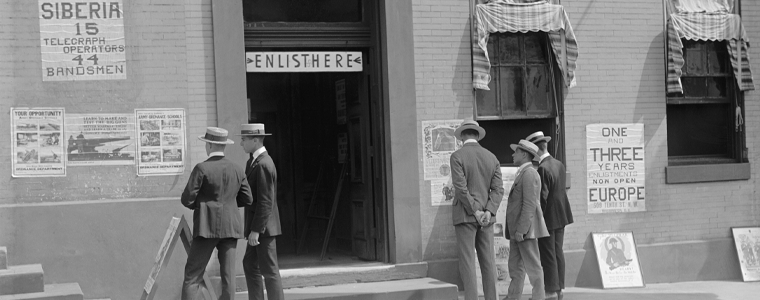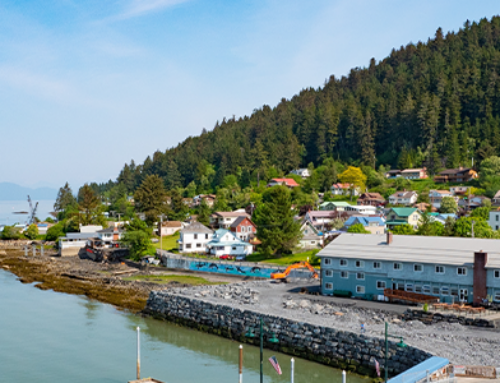The state of Alaska has often been overlooked in American and World History classes throughout schools, but in fact has been an important part in America’s history both with internal and external relations. The region has been populated for thousands of years, but only recently established itself as an independent state with its own industry and organized politics. The largest state in the United States recently became a part of our country’s, but it took thousands of years, multiple nations, economic booms and busts, and even a few wars to get where we are now. Here is a brief timeline outlining the history of America’s largest state, “the last frontier.” This may be important for those interested in moving to Alaska; who wouldn’t want to know about the place they will soon call home?
- 18th Century – International trade was booming and fur traders from Siberia began sailing to the Aleutian Islands in search of higher quality seal fur. The monopoly on higher quality fur kept Russia interested in controlling the territory well into the 19th century. The original natives suffered from several small fights for land control with the Russians but several tribes survived.
- 18-19th Century – The Russians had the majority of control but Spain and Britain both wanted a piece of the pie and began sending trading ships to claim land and take back the Northwest of the new American continent. The Spanish legacy remains in the names of the city Valdez and the Malaspina Glacier.
- 19th Century – The fur trade began to decline and many of the valuable species targeted, like the beaver, were being depleted by its popularity. Russia realized they were not reaping many profits and did not want the land to fall under control of the British; instead they decided to sell it to the Americans. The “Alaska Purchase” cost the U.S. $7.2 million, but the general public thought it was a poor investment at the time.
- 1867-1884 – “The Department of Alaska” was now under control of the U.S. government and military but there were still millions of acres of land to be explored and mapped. Western Union laid down the first telegraph line that connected Alaska to Asia and later extensive maps were developed. New trading posts were built, but the small populations of natives were some of the only residents of Alaska.
- 1884-1912 – “The District of Alaska” finally began to grow mostly as a result of the gold rush in Canada’s Yukon Territory. Miners from all over made their way to Alaska en route to Canada and which quickly led to new industries like commercial fishing and canning. In 1899, some miners found gold in the Nome area of Alaska which dramatically increased the soon to be state’s growth, and attracted more and more miners. In 1903, the U.S. and Canada finally solved their boundary dispute.
- Alaska Territory – The population of Alaska Territory had increased to about 58,000 by 1916 and a small amount of talks began in the U.S. Senate about granting Alaska statehood. The idea was turned down because of lack of interest and a small population. Soon thereafter, the Depression resulted in decreased fish and copper prices, hurting Alaska’s economy and forcing many people to leave. The development of the aircraft was the cause of the next influx in population and increased exploration.
- World War II – Japan invaded and occupied two of the Aleutian Islands in the Alaskan Territory which prompted the U.S. to give Alaska more attention and bring our armed forces north. The U.S. forcefully regained the island of Attue and after dropping many bombs on Kriska, the Japanese evacuated. A new military highway was built connecting Alaska with Great Falls, Montana and several military bases were established in the Alaskan Territory. With the new road and military presence, the population boomed once again.
- Statehood – The combination of Alaska’s geographical & strategic advantage in World War II coupled with the discovery of oil brought the Alaskan Territory to the forefront of American minds. This newfound interest led President Dwight D. Eisenhower to sign the Alaska Statehood Act into law on July 7, 1958. Only 5 years later, Alaska was rocked by the “Good Friday Earthquake”, a 9.2 quake that killed 139 and left a wake of serious damage at its epicenter.
- 1968-Present – Oil was discovered in Prudhoe Bay in 1968 and completely changed the Alaskan economy. The U.S. government negotiated with the native Alaskans to buy their land for the creation of a massive oil pipeline. The project was completed in 1977 and the economy boomed once again with no end in sight. Along with the oil boom came an outcry of environmentalism in the U.S. which prompted the government to quickly declare more than half of the land as national parks and forests. Unfortunately, that didn’t prevent the Exxon-Valdez disaster of 1989 when 11 million gallons of crude oil was released into the water. The estimated damage killed 300,000 birds, 2,000 otters, and countless other marine animals.
- Today – Alaska is still producing oil but at a slower rate and attempting to develop more drilling in the ANWR area. The state has become a primary tourism destination for Americans and nature lovers alike. The national parks, wildlife, and ancient native culture are just a few reasons millions of people flock to “the last frontier” every single year.
With a rich history, Alaska continues to evolve as people from all over converge on America’s newest state. If you are interested in relocating, contact a professional Alaskan moving company for more information today!
Tell us about your move!
 (907) 868-4756
(907) 868-4756


